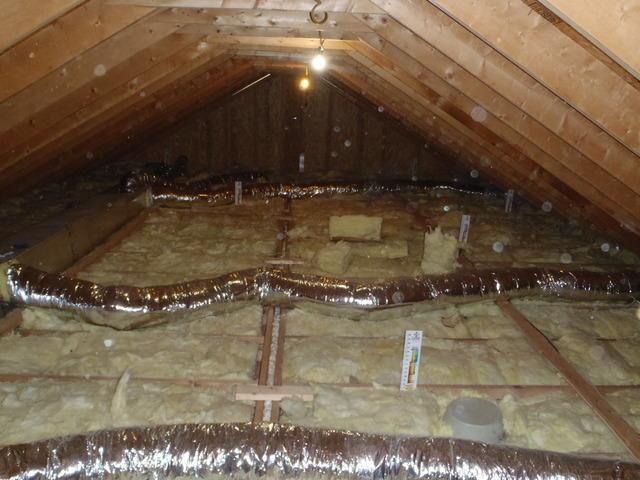TruSoft™ Cellulose Insulation
Challenge
The Problem: Air leaks at the top of home with poorly insulated attic
In a vented attic temperatures are cold in the winter, and warm in the summer. In the summer, the suns radiant heat can reach 140°. This means we need to keep a boundary between our living space and the attic. This helps so the inside air doesn’t move to the attic in the heating season (convection), and heat doesn’t pass up through our ceilings in the winter (conduction), and down from our ceilings in the summer (conduction, radiation). The attic is our first priority to reduce overall air leakage because heat rises and finds any holes to leak out into the cold vented attic. Air can also be lost in holes, gaps and joints between drywall and framing at the top of walls, around pipes, wires, chimneys, electric boxes, fixtures, ducts, ceiling grilles and joints in framing. Your typical attic is dramatically under insulated compared to today’s standards. This results to cold drafty rooms downstairs, cold floors, and higher fuel and electric bills.
Solution
Dr. Energy Saver® Solution: Seal leaks in attic floor and insulate with TruSoft Cellulose Insulation.
One thing you must keep in mind as a home owner is insulation does not stop air leaks. We first have to seal all air leaks. If this is not done before insulating, it can be impossible to seal later. To insulate your chimney we use expanding foam, boards, caulk, and metal flashing and fire caulk. If necessary, baffles (air chutes) are installed in each rafter bay to keep soffit vents clear and get ready for insulation. Next we add our premium TruSoft™ cellulose which is blown to the best R-value. This R-value typically is R60. The benefits of TruSoft™ compared to fiberglass insulation is that the TruSoft™ cellulous will not burn, get moldy or attract pests.
Result- A warmer, more comfortable, less drafty house that you’ll notice everywhere. House is quieter, and fuel and electric bill will be lower.



